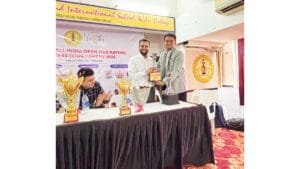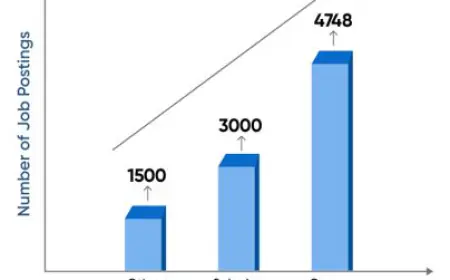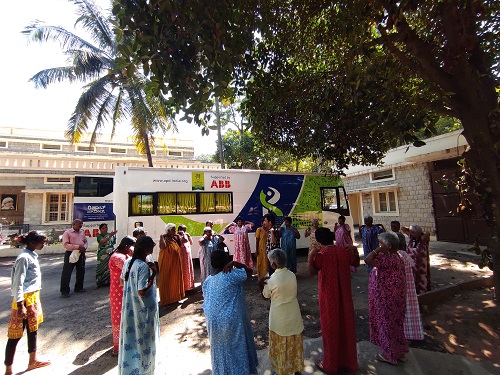Gender Dysphoria and Autism – what’s new?
New Delhi (India), March 18: Despite insistence and conformity to current societal norms, parents often feel rather shocked and worried, if their son starts showing girlish tendencies or the girl is not only a tomboy but considers herself a boy! Solution might be closer to us than we think with this new knowledge!! Autism Spectrum [...]

New Delhi (India), March 18: Despite insistence and conformity to current societal norms, parents often feel rather shocked and worried, if their son starts showing girlish tendencies or the girl is not only a tomboy but considers herself a boy! Solution might be closer to us than we think with this new knowledge!!
Autism Spectrum Disorder and Gender Dysphoria co-exist rather often than we might expect!
The relationship between gender dysphoria and autism is complex and multifaceted. Research by the International Society for Sexual Medicine (2016) stated that in comparison to the general population, the condition of Gender Dysphoria (GD) is considerably more prevalent among children and adolescents with a diagnosis of Autism Spectrum Disorder (ASD). The percentage of co-occurrence of GD and ASD is as high as 68% (Vermaat LE, LGBT Health. 2018).
Autism Spectrum Disorder and Gender Dysphoria are two distinct conditions that can intersect, presenting unique challenges for individuals and healthcare providers.
According to DSM-5 ASD is a neurodevelopmental disorder characterized by “persistent deficits in social communication and social interaction across multiple contexts” along with “restricted, repetitive patterns of behavior, interests, or activities” (DSM-5, American Psychiatric Association, 2013).
Gender Dysphoria, on the other hand, is “a marked incongruence between one’s experienced/expressed gender and assigned gender” (DSM-5, American Psychiatric Association, 2013).
For individuals with both Autism and Gender Dysphoria, navigating social interactions and expressing their gender identity can be particularly challenging. ASD is characterized by difficulties in understanding social cues and norms, which can impact their ability to understand as well as communicate their gender identity effectively. It so happens that children with ASD possesses a more fluid or, well, a less rigid understanding of the concept of gender per say. These social challenges can make it difficult for them to navigate gender norms and expectations. This can further lead to feelings of isolation and alienation, which may exacerbate gender dysphoria. Additionally, the heightened sensory sensitivity among children with ASD affect how they experience their bodies and the world around them. This heightened sensitivity may make them more aware of and sensitive to the incongruence between their assigned sex and gender identity, leading to increased distress.
As we can see, understanding this intersection is crucial for providing effective support and care for children and adolescents who has been diagnosed with both the conditions. Many children and adolescents are brought to our Tertiary Care Child Development Center by their parents with concerns about gender confusion. For the past 17 years and till date not a single child has had to leave our centre with gender confusion. To state a case as such, in 2023, a fourteen-year-old boy came with his parents whose mother is a nurse. More than her concern regarding her son’s lack of education or his habit of lying, she expressed severe concerns over and over again about his gender confusion. Stealing mother’s sarees and petticoats, and impersonating a woman was amongst his daily routines. Parents were upset. From the age of eight, from Medinipur to Delhi-Delhi, Vellore and Bangalore, she finally gave up and protested in Kolkata! The mother’s condition was so bad that for the first three months she used to physically abuse her son every time she came for treatment. The mother reported a tad relief when the son was showing minor results. After the treatment, when we gathered for the routine multidisciplinary team meeting, a process where professionals from all departments (that includes a developmental paediatrician, psychologist, vision therapist, physiotherapist, occupational therapist, and special educator) and the parents with the child meet to discuss the current developmental improvements of the child, we asked about their then-existing problems, especially, about gender confusion, their expressions of joy are still unforgettable. “That’s all gone” was the ultimate quote of the parents. They forgot about the stated difficulty of gender confusion of the child to the extent that we had to remind them about it through our routine follow-up questions.
Since we know from a 2015 Canadian research study that the higher the autism, the higher is the gender confusion. So, in our holistic treatment of Autism, which we call the “Kolkata Developmental Model”- an Universal Care Pathway, does gender confusion go away as Autism gets better? Canadian research shows autism gets better. So, if autism can be treated keeping gender confusion in mind, can gender confusion be eliminated along with Autism? Well our experience of working in accordance to the Kolkata Developmental Model and following it for the treatment of children with Autism for the past 17 years definitely says so!
If you have any objection to this press release content, kindly contact pr.error.rectification@gmail.com to notify us. We will respond and rectify the situation in the next 24 hours.





































































































